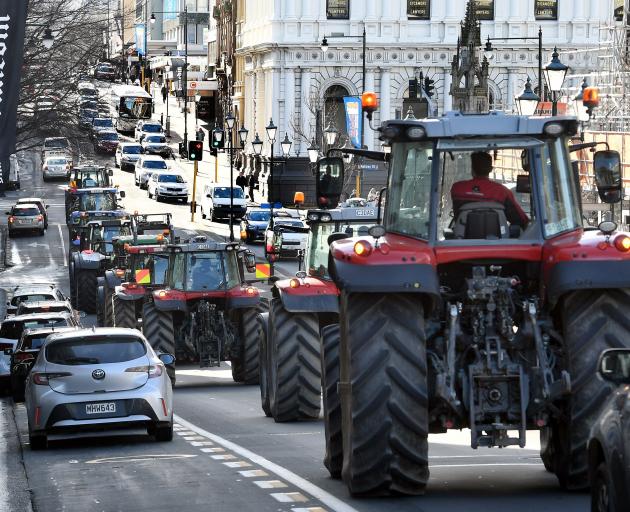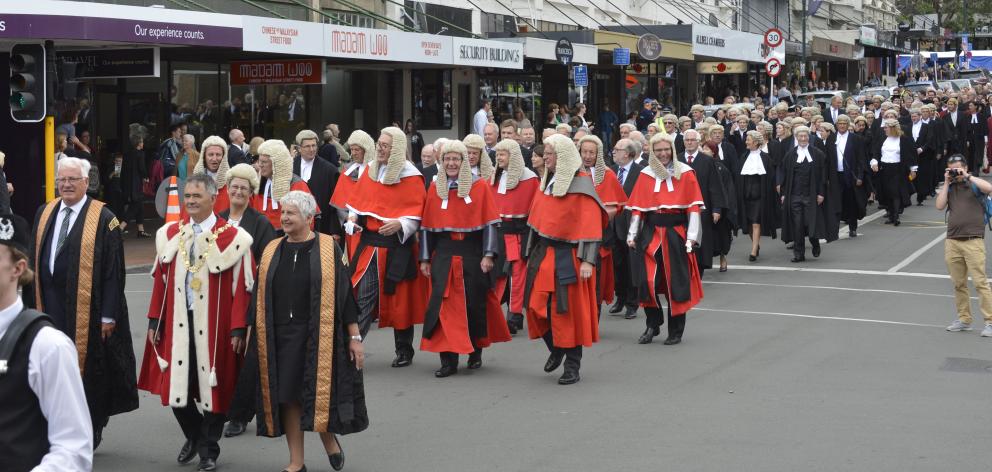
Otago and Southland are south of everywhere and because they are distant from the centres of political power and bureaucratic decision-making, southerners have had to stand up to stop the axe falling on services and facilities before. Hamish MacLean reports.
Etched in the memory of many a longtime Dunedin resident is a winter’s day in 2010 when thousands marched through the city’s streets.

Dunedin Mayor Peter Chin and Invercargill Mayor Tim Shadbolt led a procession that started in the Octagon and ended with a crowd surrounding Dunedin Hospital.
"It’s a no-brainer: Neurosurgery — keep it here", was the catch cry.
Pupils, pensioners and everyone in-between stood shoulder to shoulder — the whole region was up in arms.
"Health more precious than wealth", one placard on the day read.
"Southerners deserve a chance."
This newspaper’s front page blared the following day, "Can they dare ignore this?"
Dunedin Hospital’s chief medical officer at the time, Richard Bunton, said the government would be "politically unwise" to disregard the masses.
It had emerged in the months before the march that the South faced losing its neurosurgery service.
The specialists were to be cut from Dunedin Hospital and Canterbury was to benefit from the loss.
Rather than four surgeons based in Christchurch and two in Dunedin, the plan was for six and zero.
Otago and Southland would be without a life-saving service.

"You saved it", the Otago Daily Times front page proclaimed.
When the 84-page report into South Island neurosurgery was released, public input was celebrated.
The panel behind the report were clear the public had played a role when they recommended not a cut to the service here, but for it to be enhanced.
Dunedin was to be New Zealand’s academic neurosurgical unit and was to have three neurosurgeons, it said.
"The no-nonsense report backed the view of thousands of Otago and Southland people that service changes which knowingly increased deaths or less favourable outcomes for patients could not be supported", the ODT reported.
"Nor did the panel accept the view that Otago and Southland campaigners were political, emotional and ill-informed.
"Much of the public comment was well-informed and thoughtful, it said."
While difficulties in recruiting neurosurgeons (a specialty in high demand world-wide) has meant that that the Dunedin wing of the service has never been fully staffed, the fact that Dunedin still has a neurosurgeon at all is in no small part due to the 2010 campaign and march.
It was, this newspaper said at the time, one of the most intense exercises in participatory democracy witnessed in the South for many years.

The following year, in 2011, an initial seismic assessment of Dunedin’s historic courthouse found parts of the building to have a high earthquake risk.
The Ministry of Justice commenced gradually relocating court services until the building was vacated, when it seemed the government decided it was too expensive to fix.
The mayor started the Dunedin Courthouse Taskforce and the Save Our Courthouse group started a public postcard campaign directed at the government.
Subsequently Cabinet announced the courthouse would be strengthened, restored and modernised in a two-year project.
The business case proffered by the government cited "strongly held local views".
The Dunedin City Council, the legal profession, local media and the wider Otago community believed "that court functions should return to the Stuart St site as soon as possible", it said.
The job cost about $20m, but at the start of 2018, the courthouse reopened.
Again, Dunedin’s streets were flooded with people, but this march was a celebration.

More recently large crowds have gathered at the School Strike 4 Climate marches, Groundswell protests, or to protest government decisions around Te Tiriti o Waitangi.
And at this particular moment, what southerners were promised would be in a new Dunedin hospital in the city centre is under threat as the government again eyes cutting what will be in the inpatient building before it even gets off the ground.
Dunedin Mayor Jules Radich left a meeting with Dr Reti in Wellington this week without any real answers.
By the end of the week, Mr Radich’s message was clear.
"Get ready to march."
Organisers have said they hope next Saturday’s march could be one of the largest public protest movements the city has experienced for some time.
"This is going to be big, and it needs to be, to make sure our voices are heard in Wellington", Mr Radich said.
It has happened before.
Advertisement












